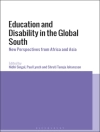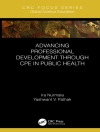While the negative effects of urban poverty are well documented, the everyday experiences of urban residents are often absent or secondary in urban studies research. The Cost of Being Poor rectifies this problem by examining both the noneconomic and the often-overlooked economic costs faced by residents of poor urban neighborhoods in Gary, Indiana. Using census, regional, and local data, and in-depth interviews with the residents of Gary, Sandra L. Barnes argues that many people incur costs resulting from the dual dilemma of being poor and residing in a poor urban area. She explores how factors such as race/ethnicity, neighborhood type, and location influence residents’ views, coping strategies, and unconventional approaches toward making ends meet. Well written and accessible, this study of Gary’s poor urban neighborhoods offers broad findings that apply to other similarly impoverished Rust Belt cities.
विषयसूची
List of Illustrations
List of Tables
Acknowledgments
Introduction: Structure vs. Agency and the Poor Urban Experience
1. The
Economics of the Poor Urban Experience
2. Space Usage and Cost Differentials in Gary, Indiana: Counting the Costs
3. Differential Goods and Services to Feed a Family: Who Pays the Costs?
4. Differential Goods and Services to Clothe a Family: Who Pays the Costs?
5. A Tale of Three Families: Impracticality Costs
6. Sociopsychological Implications of Exposure to Poverty-related Constraints: Coping with the Costs
Conclusion: A Thesis on the Poor Urban Experience: Validating Experiences
Appendix
Notes
References
Index
लेखक के बारे में
Sandra L. Barnes is Assistant Professor of Sociology and African American Studies at Purdue University












